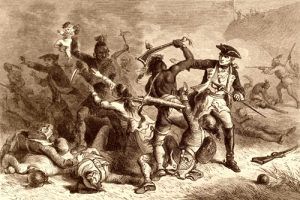Fort Cap-Au-Gris, also called Fort Independence and Capo Gray, was a temporary post built in the summer of 1813 near Troy, Missouri, during the War of 1812. Missouri Rangers erected it upon the advisement of the inhabitants of Fort Howard to observe the Indian movements on the Mississippi River. Built under the direction of Nathan Boone, son of Daniel Boone, the fort was located about 18 miles east of Troy, Missouri.
After the defeat of Fort Johnson, U.S. Army soldiers under the command of Zachary Taylor retreated to Cap au Gris in October 1814. The Battle of the Sink Hole was fought near the fort on May 24, 1815, after the official end of the War of 1812, between Missouri Rangers and Sac Indians led by Black Hawk. The Sac were unaware or did not care that their British patrons had signed the Treaty of Ghent with the U.S. The battle was fought in a low spot near the mouth of the Cuivre River near present-day Old Monroe near Fort Howard and Fort Cap au Gris. An ambush by the Sac Indians on a group of rangers led to a prolonged siege in which seven Rangers and one Sac were killed. In 1824 the Sac and Fox finally gave up all claims to the region.
A small village called Cap Au Gris grew up around the old fort and was officially laid out in 1845. It soon boasted two stores, a school, and a population of about 60 people. The town was incorporated in 1876 under the name of “The Inhabitants of the Town of Wiota;” however, the people never became accustomed to the new name and continued to use the old name. It became an early-day shipping point for Troy and became a town of some importance, boasting several businesses. However, when the railroads arrived, they took away the village’s trade, and by 1888, the town was entirely gone.
By Kathy Alexander/Legends of America updated October 2022.
Also See:

